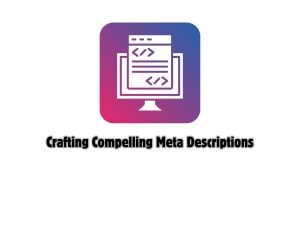
Crafting Compelling Meta Descriptions: A Step-by-Step Guide
Meta descriptions play a crucial role in search engine optimization (SEO) by providing a brief summary of a web page’s content in search engine results
In the realm of sales and marketing, cold outreach remains a valuable strategy for connecting with prospects, nurturing leads, and driving business growth. However, to maximize the effectiveness of cold outreach campaigns, it is essential to track and analyze key metrics that indicate success and identify areas for improvement. In this article, we will explore the importance of cold outreach analytics, discuss various success metrics, and uncover strategies for optimizing outreach efforts.
Cold outreach analytics involves the systematic tracking and analysis of data related to outreach campaigns, including email opens, responses, conversions, and overall engagement. By monitoring these metrics, businesses can gain insights into the effectiveness of their outreach efforts, understand customer behavior, and make informed decisions to enhance campaign performance.
1. Open Rate: The percentage of recipients who open the initial outreach email. A high open rate indicates that the subject line and sender name are compelling and relevant to the recipient.
2. Response Rate: The percentage of recipients who respond to the outreach email. A high response rate indicates that the email content resonates with the recipient and prompts them to take action.
3. Conversion Rate: The percentage of responses that result in a desired outcome, such as scheduling a meeting, booking a demo, or making a purchase. A high conversion rate indicates that the outreach campaign is effectively driving desired actions from recipients.
4. Engagement Metrics: Metrics such as click-through rate, time spent on website, and social media interactions can provide insights into recipient engagement and interest levels.
5. Pipeline Movement: Tracking the progression of leads through the sales pipeline, from initial contact to close, can help identify bottlenecks and areas for improvement in the sales process.
1. Personalization: Tailor outreach messages to each recipient based on their interests, pain points, and preferences. Use merge tags to dynamically insert personalized information into email templates.
2. A/B Testing: Experiment with different subject lines, email copy, and call-to-action buttons to identify the most effective messaging and design elements.
3. Follow-Up Sequences: Implement automated follow-up sequences to re-engage recipients who have not responded to the initial outreach email. Use a mix of email, phone calls, and social media outreach for maximum impact.
4. Segmentation: Segment your email list based on criteria such as industry, job title, or previous interactions with your brand. This allows for more targeted messaging and improves relevance for recipients.
5. Continuous Improvement: Regularly review and analyze cold outreach analytics to identify trends, patterns, and areas for optimization. Use insights gained from analytics to refine your outreach strategy and iterate on future campaigns.
Cold outreach analytics play a crucial role in measuring the success of outreach campaigns and uncovering growth opportunities for businesses. By tracking key metrics, optimizing outreach efforts, and continuously refining strategies based on data-driven insights. Businesses can enhance the effectiveness of their cold outreach initiatives and achieve meaningful results in their sales and marketing endeavors.

Meta descriptions play a crucial role in search engine optimization (SEO) by providing a brief summary of a web page’s content in search engine results

In today’s fast-paced digital landscape, real-time interaction has become a cornerstone of online engagement strategies for businesses across industries. Whether it’s responding to customer inquiries





“LeadsView did an excellent job with my project and will definitely recommend. Easy to work with, flexible and good quality of work. I am more than happy to recommend them."




















Copyright 2024 © LeadsView. All Rights Reserved
